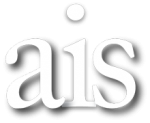Tajbakhsh A, Rivandi M, Abedini S et AL – Regulators and mechanisms of anoikis in triple-negative breast cancer (TNBC): A review. – Crit Rev Oncol Hematol. 2019 May 18;140:17-27.
Metastasis leads to poor prognosis and reduced disease-free survival in breast cancer patients, particularly in those with triple-negative breast cancer (TNBC) which is resistant to common treatments. Anoikis is a type of apoptosis commenced by the detachment of cells from the native extracellular matrix and prohibits the attachment of detached cells to other body organs. Resistance to anoikis is a critical culprit in the development and progression of tumours. It is therefore important to understand the anoikis-related molecular pathways in order to design effective therapies for TNBC. Several compounds have been shown to possess the potential to regulate anoikis in breast cancer cells such as DSF, AEB071, nanoencapsulated doxorubicin, berberine, salinomycin, PEM POL5551, AL10, 5-azacytidine, synthesized flavonoid derivative GL-V9, Tubeimoside V (TBMS-V) and HPW-RX40. We reviewed the molecular basis of anoikis regulation, its potential role as an important target to inhibit metastasis in TNBC, and potential anoikis modulators that could serve as drug candidates.

